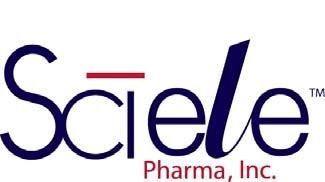预约演示
更新于:2025-12-13
Tropomyosin inhibitors(Shionogi)
更新于:2025-12-13
概要
基本信息
药物类型 小分子化药 |
别名 Compound 19(Shionogi) |
作用方式 抑制剂 |
作用机制 原肌球蛋白抑制剂 |
在研适应症 |
非在研适应症- |
非在研机构- |
权益机构- |
最高研发阶段临床前 |
首次获批日期- |
最高研发阶段(中国)- |
特殊审评- |
关联
100 项与 Tropomyosin inhibitors(Shionogi) 相关的临床结果
登录后查看更多信息
100 项与 Tropomyosin inhibitors(Shionogi) 相关的转化医学
登录后查看更多信息
100 项与 Tropomyosin inhibitors(Shionogi) 相关的专利(医药)
登录后查看更多信息
4
项与 Tropomyosin inhibitors(Shionogi) 相关的文献(医药)2025-05-22·Cureus Journal of Medical Science
Larotrectinib Treatment of Xanthogranuloma With NTRK1 Gene Fusion: A Case Report
Article
作者: Humeniuk, Michael ; Ralston, Grace
Non-Langerhans cell histiocytosis (NLCH) is a broad disorder encompassing different diseases arising from dermal dendritic histiocytes. Xanthogranuloma (XG) is a cutaneous subtype of NLCH that can be present in isolated or multiple locations. If localized, XGs can be treated with surgical resection or radiation; however, if they present more disseminated, they are poorly responsive to traditional chemotherapeutic agents. This case discusses a 26-year-old male who presented with diffuse light brown/tan papules progressively spreading from the bilateral groin axillae to the trunk, pelvis, and eyelids over the course of six months. Histologic evaluation demonstrated findings consistent with XG with immunostaining strongly positive for neurotrophic tyrosine kinase receptor 1 (NTRK1) gene fusion. He was diagnosed as likely having an early form of XG disseminatum before visceral involvement had developed, but given how rare and complex XG diseases are to classify, he might also be considered to have disseminated adult XG. He was started on larotrectinib, an oral tropomyosin inhibitor used to treat solid tumors associated with NTRK gene fusions. Improvement in the lesions was noticeable as early as six weeks, with a successful partial clinical response by four months of treatment, where he ceased to develop new lesions, and the pre-existing lesions became more macular. He eventually discontinued therapy due to a known side effect of weight gain and has continued to maintain his response since. This report demonstrates a positive clinical response of an NTRK1 inhibitor in an adult with NTRK1-positive XGs, providing further evidence that targeted therapy may be beneficial for these otherwise challenging patients.
2024-07-11·JOURNAL OF MEDICINAL CHEMISTRY
Discovery and Hit to Lead Optimization of Macrocyclic Peptides as Novel Tropomyosin Receptor Kinase A Antagonists
Article
作者: Mihara, Kousuke ; Mikamiyama, Hidenori ; Nakata, Zenzaburo ; Mayumi, Kei ; Shimizu, Masaya ; Ando, Azusa ; Yamada, Toru ; Ueda, Taichi ; Yamauchi, Daisuke
Tropomyosin receptor kinases (Trks) are receptor tyrosine kinases activated by neurotrophic factors, called neurotrophins. Among them, TrkA interacts with the nerve growth factor (NGF), which leads to pain induction. mRNA-display screening was carried out to discover a hit compound 2, which inhibits protein-protein interactions between TrkA and NGF. Subsequent structure optimization improving phosphorylation inhibitory activity and serum stability was pursued using a unique process that took advantage of the peptide being synthesized by translation from mRNA. This gave peptide 19, which showed an analgesic effect in a rat incisional pain model. The peptides described here can serve as a new class of analgesics, and the structure optimization methods reported provide a strategy for discovering new peptide drugs.
2017-08-01·Molecular cancer therapeutics2区 · 医学
Identification of Cancer-Targeted Tropomyosin Inhibitors and Their Synergy with Microtubule Drugs
2区 · 医学
Article
作者: Hook, Jeff ; Nartker, Brooke A. ; Treutlein, Herbert ; Brown, David ; Gunning, Peter W. ; Eiffe, Eleanor ; Cripe, Timothy P. ; Currier, Mark A. ; Hardeman, Edna C. ; Alieva, Irina B. ; Zeng, Jun ; Chen, Duo ; Kloss, Nina ; Heaton, Andrew ; Eaves, David W. ; Stehn, Justine R. ; Dugina, Vera B. ; Swain, Ashleigh
Abstract:
Actin filaments, with their associated tropomyosin polymers, and microtubules are dynamic cytoskeletal systems regulating numerous cell functions. While antimicrotubule drugs are well-established, antiactin drugs have been more elusive. We previously targeted actin in cancer cells by inhibiting the function of a tropomyosin isoform enriched in cancer cells, Tpm3.1, using a first-in-class compound, TR100. Here, we screened over 200 other antitropomyosin analogues for anticancer and on-target activity using a series of in vitro cell-based and biochemical assays. ATM-3507 was selected as the new lead based on its ability to disable Tpm3.1-containing filaments, its cytotoxicity potency, and more favorable drug-like characteristics. We tested ATM-3507 and TR100 alone and in combination with antimicrotubule agents against neuroblastoma models in vitro and in vivo. Both ATM-3507 and TR100 showed a high degree of synergy in vitro with vinca alkaloid and taxane antimicrotubule agents. In vivo, combination-treated animals bearing human neuroblastoma xenografts treated with antitropomyosin combined with vincristine showed minimal weight loss, a significant and profound regression of tumor growth and improved survival compared with control and either drug alone. Antitropomyosin combined with vincristine resulted in G2–M phase arrest, disruption of mitotic spindle formation, and cellular apoptosis. Our data suggest that small molecules targeting the actin cytoskeleton via tropomyosin sensitize cancer cells to antimicrotubule agents and are tolerated together in vivo. This combination warrants further study. Mol Cancer Ther; 16(8); 1555–65. ©2017 AACR.
100 项与 Tropomyosin inhibitors(Shionogi) 相关的药物交易
登录后查看更多信息
研发状态
10 条进展最快的记录, 后查看更多信息
登录
| 适应症 | 最高研发状态 | 国家/地区 | 公司 | 日期 |
|---|---|---|---|---|
| 疼痛 | 临床前 | 日本 | 2024-07-01 |
登录后查看更多信息
临床结果
临床结果
适应症
分期
评价
查看全部结果
| 研究 | 分期 | 人群特征 | 评价人数 | 分组 | 结果 | 评价 | 发布日期 |
|---|
No Data | |||||||
登录后查看更多信息
转化医学
使用我们的转化医学数据加速您的研究。
登录
或

药物交易
使用我们的药物交易数据加速您的研究。
登录
或

核心专利
使用我们的核心专利数据促进您的研究。
登录
或

临床分析
紧跟全球注册中心的最新临床试验。
登录
或

批准
利用最新的监管批准信息加速您的研究。
登录
或

特殊审评
只需点击几下即可了解关键药物信息。
登录
或

生物医药百科问答
全新生物医药AI Agent 覆盖科研全链路,让突破性发现快人一步
立即开始免费试用!
智慧芽新药情报库是智慧芽专为生命科学人士构建的基于AI的创新药情报平台,助您全方位提升您的研发与决策效率。
立即开始数据试用!
智慧芽新药库数据也通过智慧芽数据服务平台,以API或者数据包形式对外开放,助您更加充分利用智慧芽新药情报信息。
生物序列数据库
生物药研发创新
免费使用
化学结构数据库
小分子化药研发创新
免费使用
